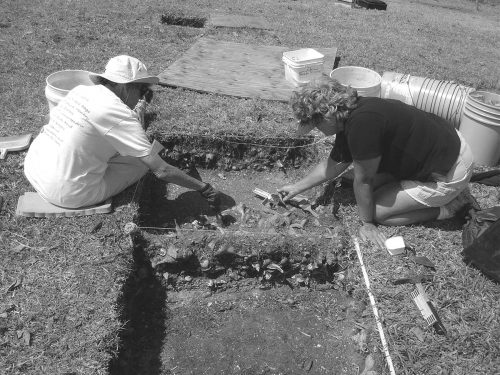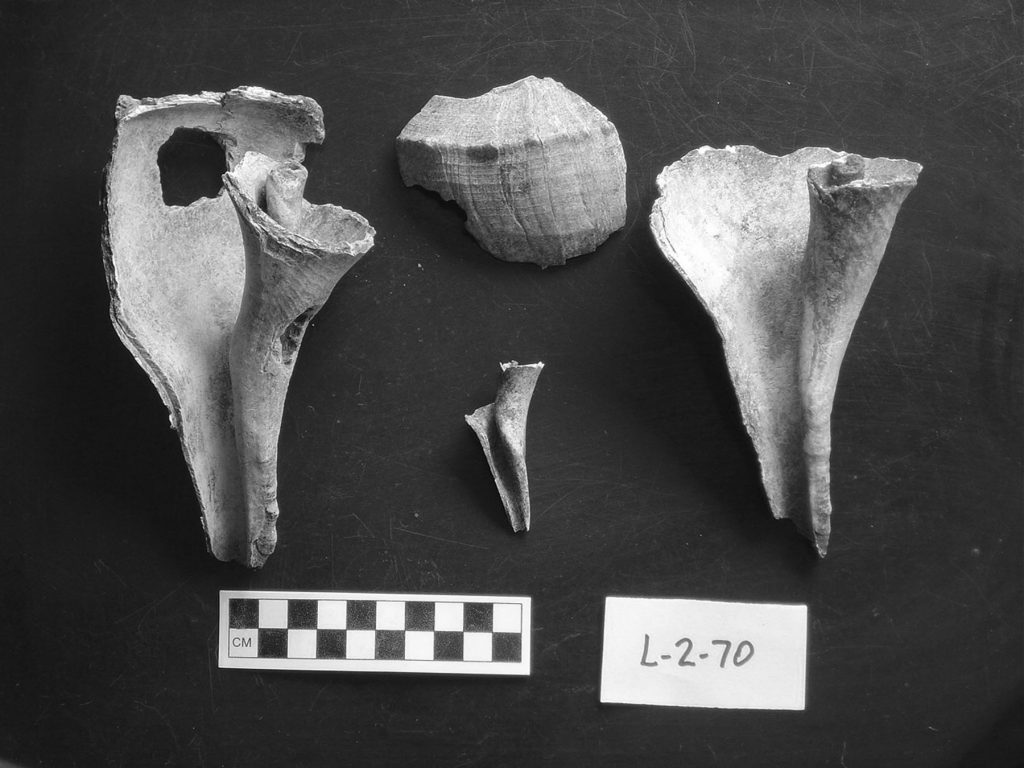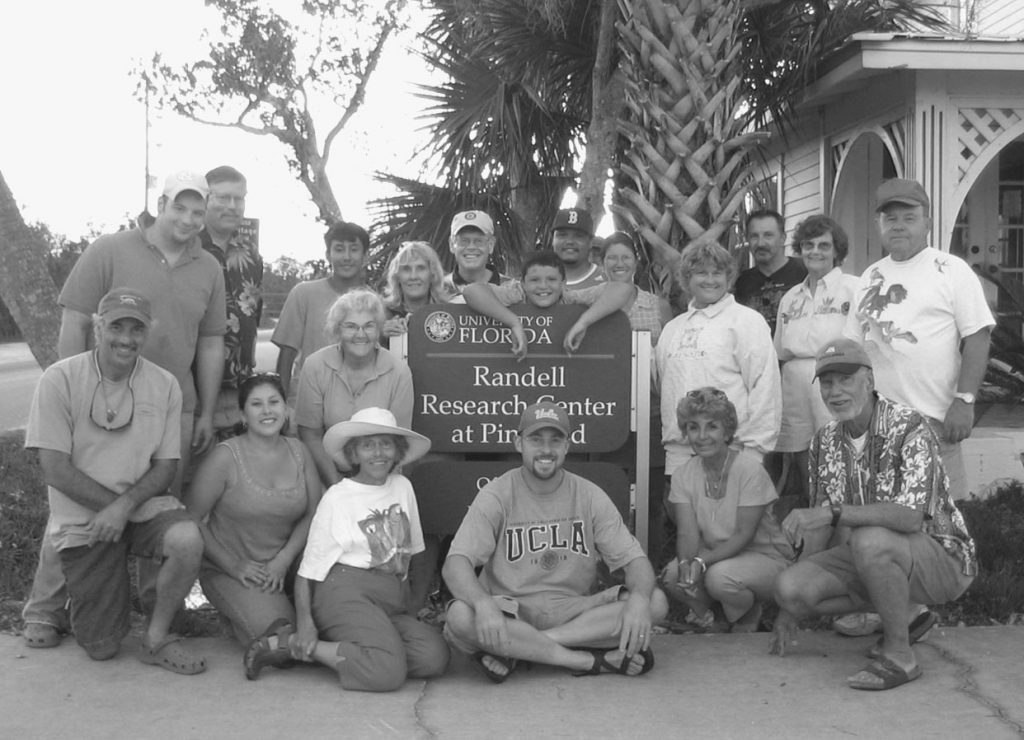Just beneath the surface of a grassy hillside on Useppa Island lies a dense layer of shell that may hold a key to understanding the beginnings of Calusa political dominance. Over 50 Randell Research Center, UCLA, and Useppa Island Historical Society volunteers donated more than 2,000 hours of their time this spring to exposing what appears to be a prehistoric shell axe workshop.

In sharp contrast to the mixture of food remains and pottery found in most shell middens in the area, this layer consists almost entirely of large lightning whelk shells, the species from which shell axes were made. They may have been left behind by craftspeople who lived there just prior to A.D. 800, when the Calusa were beginning to adopt a more complex political system. The shell tools could have been used to manufacture canoes and other wooden items that were essential to the Calusa, a powerful maritime society that dominated south Florida by the 1500s.
At some point, Calusa leadership became centralized, and social status became inherited, not just earned. But how did such a social structure first develop? Part of the answer may have to do with the ability of enterprising leaders to control certain resources, and to distribute them in return for political or economic advantages. In a fishing society like the Calusa, canoes and the tools used to make them might have been resources worth controlling. The person or persons who did so would become politically powerful.
Tipped off by the unfinished shell tools first noted during construction in 1998, we designed the current project to determine whether a shell tool workshop was present. Working a stone’s throw from the historic Collier Inn, volunteers excavated thousands of whole and broken lightning whelks, along with shell hammers and sandstone fragments that might have been used to manufacture tools. The precise location of each tool and large shell was recorded, and all of the excavated lightning whelk fragments were collected for further study. Several unfinished shell tools were also recovered, providing even stronger evidence for on-site tool production.

Fully answering the question of whether this deposit represents a shell tool workshop will rely on laboratory analysis at UCLA’s Cotsen Institute of Archaeology. Distinguishing among shell breakage caused by meat removal, tool making, and damage caused by modern construction activities is challenging, to say the least. For that reason, our analysis will attempt to demonstrate that the shells found on Useppa Island were broken in a manner that is both uniform and consistent with the manufacture of shell woodworking tools.
In all, we excavated ten square meters of the hillside and recovered artifacts from three distinct time periods. The potential shell tool workshop deposit appears to date to A.D. 600-800, based on associated pottery. Beneath it was an earlier black sand midden that rests upon sterile dune sand, approximately one meter below the modern ground surface. Above it was a thin scatter of Cuban-period artifacts, an unexpected bonus. These included three glass beads, several olive jar fragments, and a piece of iron grape shot. These items are most likely associated with the early nineteenth-century fishing camp operated by José Caldéz.
The value of this project goes beyond the fascinating archaeological results. It was also a wonderful opportunity for a diverse group of scholars to work together, and for hundreds of people to experience archaeology first-hand. Thanks to the Randell Research Center, Garfield Beckstead and the Useppa Island Club, the Useppa Island Historical Society, the UCLA Friends of Archaeology, the National Science Foundation, and the many volunteers who gave of their time, we may discover an important key to the emergence of the powerful Calusa.

This article was taken from the Friends of the Randell Research Center Newsletter Vol 5, No. 2 June 2006.